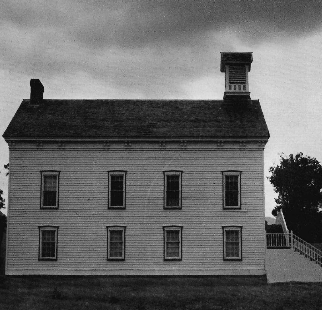Articles/Essays – Volume 01, No. 3
Among the Mormons: A Survey of Current Literature
The historian, essentially, wants more documents than he can really use . . .
Henry James. The Aspern Papers
History is bunk.
Henry Ford
The books, periodicals, and manuscripts listed in bibliographies are of little value if the materials are not located and made available to those who might have an interest in using them. With this in mind we depart from our previous format to consider bibliographical control of Mormon Americana and the location of libraries and historical agencies which have significant holdings of Mormon materials.
The study of Mormonism should begin in Salt Lake City, where, according to Norman Furniss, “The best colection of materials about the Mormons exists… in the archives of the Church of Jesus Christ of Latter-day Saints. . . .”[1] However, the Church Historian’s Library is a “private facility” with the right of access controlled by the authorities who govern the Library. According to the official guide to the Library, “. . . the materials on file are generally available for use by the earnest researcher. The materials are not available to those whose purpose is to discredit the Church”[2] (italics mine). What does it mean to have materials available generally? Who is the judge of what scholar is out to find the truth or to discredit the Church? To further quote Dr. Furniss, “It is regrettable that the volumes are not open to the Gentile scholar, or even to most Mormon historians; the custodian of the portals, A. Wm. Lund, is adamant in his refusal to let all but the most faithful dip into this record.”[3]
To the average member of the Church trained in the humanities or with any interest in Church history this information is not new or particularly startling. And both Mormon and “Gentile” writers have long since discovered that with the exception of some unique items (i.e., manuscript letters and diaries) they can find all the information about the Mormon Church that they need to write acceptable histories in other libraries in the United States, if they know where to look and take the trouble to go there. And so to a large extent the writing of Mormon history continues, sometimes with laudable results and other times failing to fulfill expectations.
A good illustration of my point is contained in the response in this issue of Dialogue by Stanley B. Kimball to Klaus Hansen’s review (in the Summer issue) of Robert B. Flanders, Nauvoo: Kingdom on the Mississippi. Kimball criticizes Flanders for neglecting a number of important collections of primary sources and in doing so reveals what those sources are (see pp. 189-193). We would add just one thing to Kimball’s suggestions: To someone who has served on the staff of the Brigham Young University Library for a number of years it seems incredible that anyone working on a Mormon theme could avoid the Y and still claim to have made a thorough search of the records. But that it is being done is very evident. So that it will not be done as frequently in the future we have invited Dr. S. Lyman Tyler, former Director of the BYU Library, who is now Director of the Bureau of Indian Services at the University of Utah, to write an essay emphasizing the work being done at the Y to gain a modicum of bibliographical control of Mormon sources. Dr. Tyler refers to his work as an “informal essay . . . without being bothered by technical details.”
We invite our readers at Harvard, Wisconsin, Princeton, California or wherever there are collections of Mormon materials to submit to Dialogue a brief description of holdings in their areas for future publication.[4]
[1] Furniss, Norman F., The Mormon Conflict, 1850-1859 (New Haven, Conn., 1960), p. 236.
[2] Guide to the Historian’s Office Library-Archives (Office of the Church Historian, The Church of Jesus Christ of Latter-day Saints, Salt Lake City, Utah).
[3] Furniss, ibid.
[4] For an excellent example of what can be done see S. George Ellsworth’s, “A Guide to the Manuscripts in the Bancroft Library Relating to the History of Utah.” Utah Historical Quarterly, XXII (July, 1954), 197-247.


 Back to full Issue
Back to full Issue

